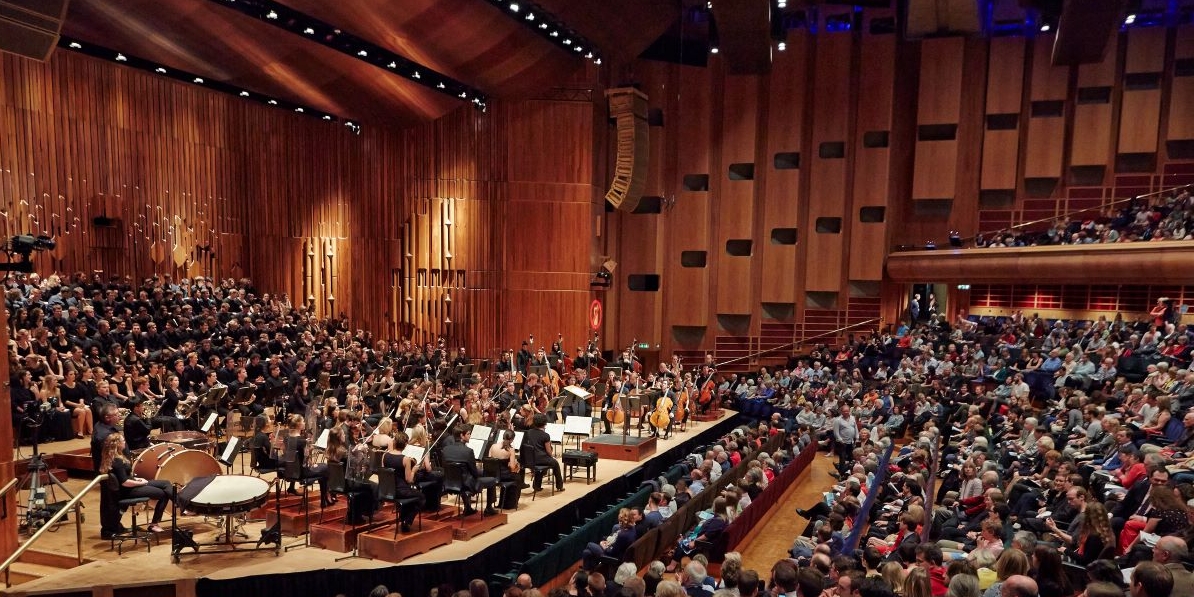Just as in its choice of opera repertory, the Guildhall School prefers to walk on the wilder side of orchestral repertory. Not for them the safe territory of overture, concerto and symphony; although there are elements of each of these in their choice of works by Unsuk Chin, Bela Bartok and Alexander Zemlinsky for their November concert in the Barbican Hall, led by experienced Dutch conductor, Antony Hermus.
‘Frontispiece’ is a recent work by South Korean composer, Unsuk Chin, and consists of an eight-minute orchestral collage, in which very brief reminiscences of various composers (I spotted Strauss, Stravinsky, and Tchaikovsky, but there were clearly others!) are thrown together with brooding unison string lines and plenty of percussive effects. There are many opportunities for all sections of the orchestra to shine, and the piece explores a wide dynamic range with very sudden changes of tempo. It makes an intriguing curtain-raiser – I heard a similar piece used by the Halle Orchestra to launch one of their concerts a few weeks ago.
Next up was the orchestral suite that Bartok drew from his brilliantly pictorial ballet ‘The Miraculous Mandarin’. Dating from the 1920s, this work shows clearly the influence of ‘The Rite of Spring’, while also still recognisable as the creation of the composer of the more expressionist and Straussian ‘Duke Bluebeard’s Castle.’ The deliberately cacophonous opening and the complex agglomeration of cross-rhythms of the finale make this a very demanding piece to play. But the meticulous and clear direction from Hermus and the virtuosity of these young players carried all before them. The woodwind soloists distinguished themselves in particular, and rightly received solo bows at the end.
However, the real revelation of this concert was Zemlinsky’s fifty-minute symphonic poem ‘Die Seejungfrau’ or ‘The Mermaid’. Zemlinsky’s music really deserves to be better known, and this piece in particular. Squeezed and sandwiched between Brahms as teacher, Schönberg as brother-in-law, and Korngold as pupil, not to mention being dumped by Alma soon-to-be Mahler, he has been denied his own place in the sun. Drawing loosely on Hans Christian Andersen’s ‘The Little Mermaid’, this sumptuous three-movement work is a lavish orchestral showpiece that sums up the cultural world of ‘Vienna 1900′. While owing something to the lushness of Strauss’ contemporary symphonic poems, it has its own language, less repetitive, and without the Sachertorte clagginess. It offers a wonderful snapshot of late-Romantic musical life just ahead of Mahler’s ascendancy, while also looking forward to Hollywood.
Quite apart from the numbers of players required (eg. seven horns, three trumpets and four trombones in the brass section alone), it places huge demands on any orchestra, and as a result there are few recordings to guide you. There are moments of great delicacy amid the swirling orchestral textures, and I was struck by how many delectable solos were there for all the principals. The leader of the orchestra was particularly busy. While there were a few points where the balance between the sections became a bit muddy, overall this was a huge achievement, held together by the conductor’s infectious enthusiasm for this work and clear sense of structure.
From my conversations afterwards, it is clear that many in the audience, old and young, were heading off to explore this composer in greater depth – and rightly so!

